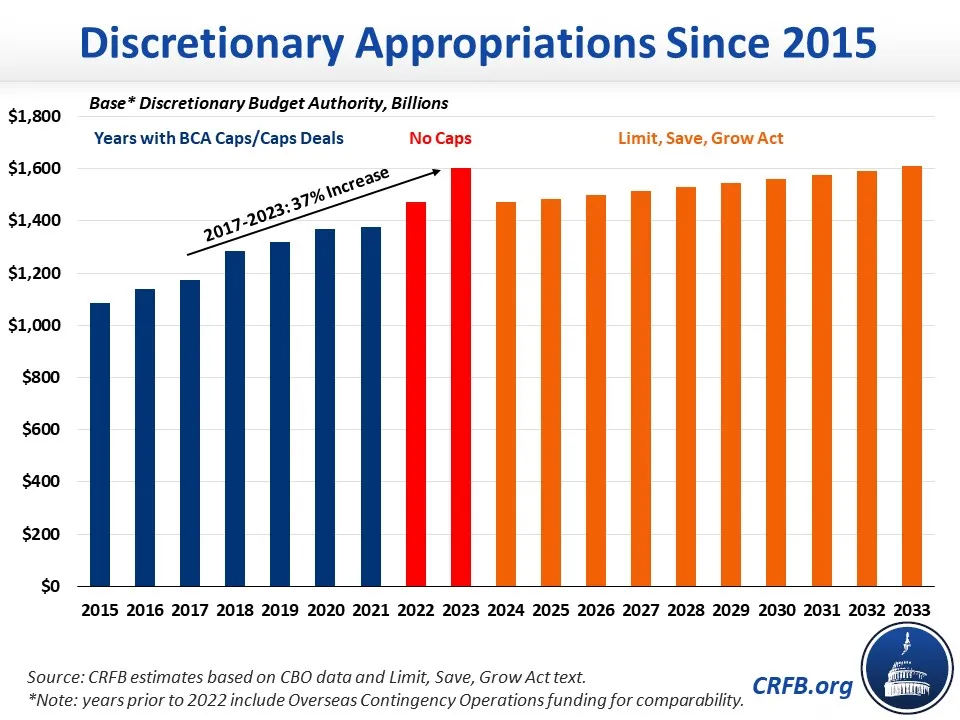Putting the Limit, Save, Grow Act in Context
The Limit, Save, Grow Act would reduce deficits by about $4.5 trillion over the next decade, with $3.2 trillion of those savings coming from caps to discretionary spending. In particular, the bill would restore ordinary discretionary spending to the Fiscal Year (FY) 2022 level and then cap annual growth at 1 percent per year through 2033.
While returning to 2022 levels would mean an 8 percent cut relative to this year, that reduction follows a 9 percent increase last year and a total increase of 37 percent since 2017. Indeed, returning spending to FY 2022 levels next year would leave 2024 spending:
- $215 billion above what President Obama proposed for 2024 in his final budget.
- $125 billion above what President Trump proposed for 2024 in his final budget.
- 25 percent, or $300 billion, above 2017 levels.
- In line with the discretionary proposal of our CRFB Fiscal Blueprint for Reducing Debt and Inflation.

These caps are aggressive but reasonable and achievable assuming lawmakers consider all parts of the discretionary budget when meeting these caps.
Those who disagree with the levels in the Limit, Save, Grow Act should put forward their own discretionary proposals and their own plans to begin putting the debt on a more sustainable path.

